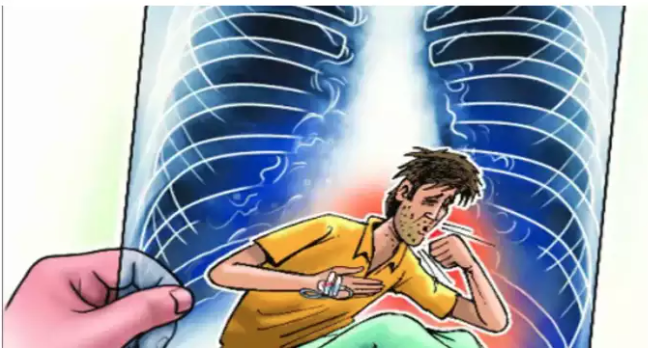
According to World Health Organization (WHO), 10 million people are afflicted with tuberculosis (TB) annually. Though both preventable and curable, each year, 1.5 million people die, making TB the world's top infectious disease killer. India bears the greatest burden of TB globally – affecting about 2.4 million. Further, almost 40 per cent of Indians have latent TB infection.
Given the number of TB cases in the country, there is an urgent need to foreground the problem and place TB patients at the centre, surrounded by a supportive ecosystem of family and the community. Since TB patients suffer socio-economic consequences like stigma and job loss, they usually hide their disease, hampering both treatment and full recovery.
The current approach to TB prevention, care and support in India is largely biomedical, and these elements are often sidestepped. While the National TB Elimination Programme (NTEP) provides targeted benefits and nutrition schemes like the Nikshay Poshan Yojana that greatly ease the TB patient’s treatment journey, structural barriers of stigma, discrimination, poor knowledge, lack of psycho-social support and lack of patient-centric approaches at facilities makes the journey of TB treatment arduous and difficult for most.While there is sufficient emphasis on solutions for treatment adherence, there is still much to be done to prevent TB infection and transmission. Prevention approaches are rooted in community involvement and addressing structural barriers too calls for ecosystem-level initiatives with close interface with all those that form the environment of communities vulnerable to TB and also the community of TB infected and affected individuals.
This is where KHPT’s TB focussed project, ‘Breaking the Barriers’ project steps in. It employs a socio-ecological approach that recognizes the structural and underlying barriers that exist within specific vulnerable population groups. This ongoing project (2020-2024) attempts to fill the critical gap by innovating, testing, and demonstrating a set of pilots designed to address specific barriers to health in the contexts unique to the different vulnerable populations like miners, migrants, urban poor, tribals, tea garden workers etc.
Historically, public health programmes worldwide have taught us an important lesson- i.e., meeting targets, reducing health inequities, reducing disease prevalence, and addressing gaps in prevention, diagnosis, care, and treatment adherence remain unachievable if communities are left out of the response mechanisms. There are multiple ways in which TB elimination can benefit when viewed as a community agenda rather than solely a health programme’s responsibility.This can be actualized quite easily as many formal and informal community networks and influencers exist that represent these vulnerable populations. They have the potential to be the voice of the communities they work with and can spearhead TB initiatives at the ground level.
Then, the entire village needs to be involved. In diseases like HIV and TB, people’s perception of the disease needs to be changed. KHPT was able to do this with HIV quite successfully and all stakeholders came together. The same can be seen in the polio campaign. Diverse groups were involved — from health departments across the country to Rotary Clubs and ASHA workers. There is a need to work with frontline workers across all departments — this is the crucial need for TB elimination.
Further, we should look at involving Panchayati Raj institutions. We all know the power that the sarpanch wields over the local community. The pradhan has the power to spread accurate messaging, counter misconceptions, and stigma, and ensure that TB care services are available to the last mile. The Gram pradhans can use the Village Health Sanitation and Nutrition Committees to raise TB-related issues in monthly meetings. The gram pradhans after getting trained on TB and empowered enough to flag challenges related to TB services where needed.
We also saw how people came together to battle the COVID-19 pandemic. If we want to accelerate progress toward TB elimination goal in the country, we must implement a whole-of-society approach to eliminate the disease always foregrounding the community-centric approach.
Dr Rehana Begum is Project Director, Breaking the Barriers, KHPT’s TB elimination programme.
(DISCLAIMER: The views expressed are solely of the author and ETHealthworld does not necessarily subscribe to it. ETHealthworld.com shall not be responsible for any damage caused to any person / organisation directly or indirectly.)
Involve communities: TB elimination is a people’s agenda - ETHealthWorld
Read More

No comments:
Post a Comment